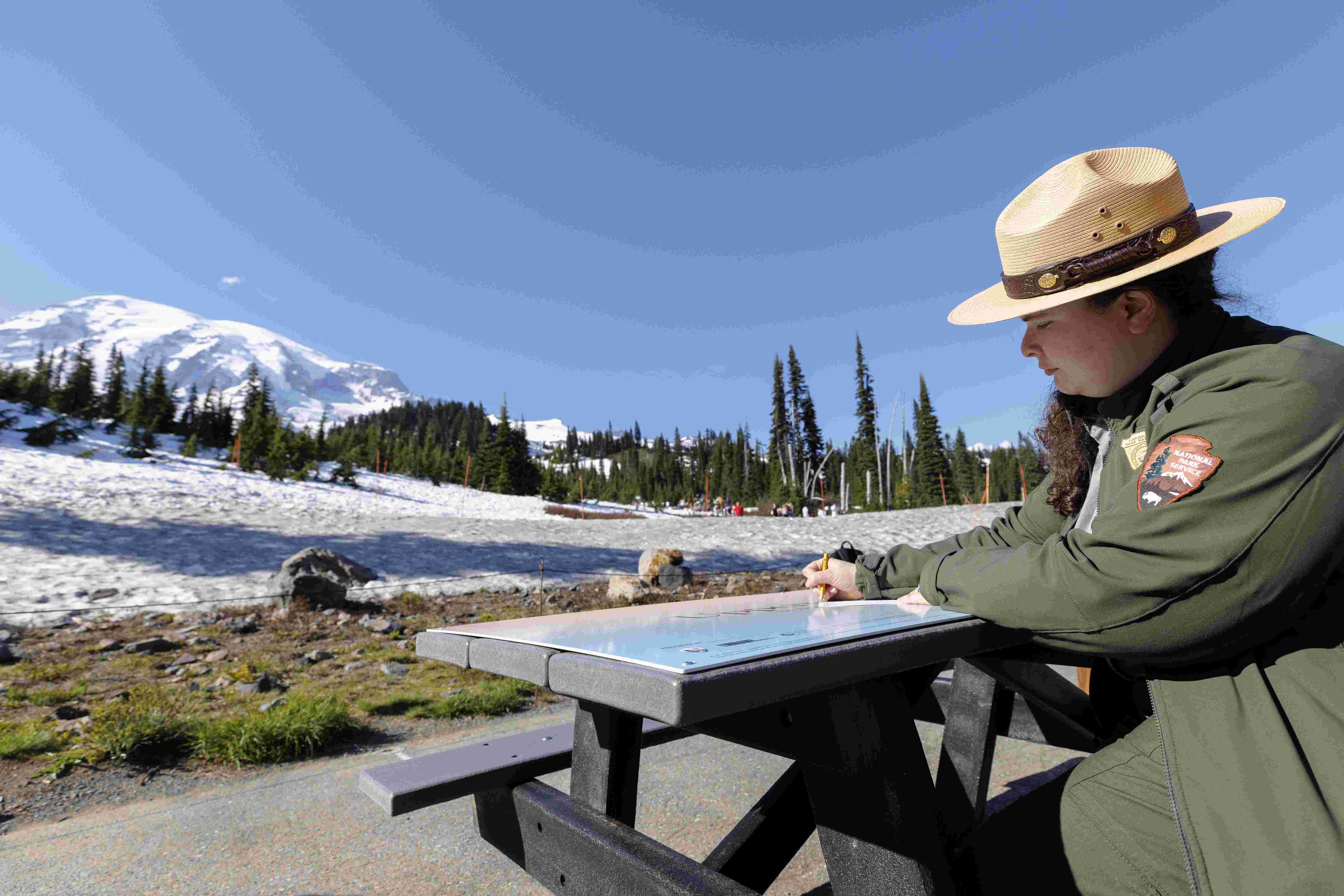Mount Rainier Red River is a captivating area within Mount Rainier National Park, known for its stunning landscapes, diverse hiking trails, and unique photographic opportunities. While not a specific river, the term ‘Red River’ likely refers to the reddish hues found in some of the park’s geological features and seasonal foliage. This guide explores the various aspects of Mount Rainier’s Red River area, including hiking trails, photography spots, and camping options, providing visitors with essential information for an unforgettable experience in this natural wonderland.
What Are the Best Hiking Trails in Mount Rainier’s Red River Area?

Mount Rainier National Park offers a variety of hiking trails that showcase the beauty of the Red River area and its surroundings. Here are some of the most notable trails:
- Skyline Trail
- Length: 5.5 miles
- Elevation gain: 1,700 feet
- Difficulty: Moderate to challenging
-
Highlights: Wildflowers, sweeping meadows, close views of Mount Rainier
-
Comet Falls Trail
- Length: 3.8 miles round trip
- Elevation gain: 1,400 feet
- Difficulty: Moderate
-
Highlights: Impressive waterfall, lush forest scenery
-
Burroughs Mountain Trail
- Length: 9.4 miles loop
- Elevation gain: 2,000 feet
- Difficulty: Challenging
-
Highlights: Barren alpine landscapes, stunning views of Mount Rainier
-
Naches Peak Loop
- Length: 3.3 miles loop
- Elevation gain: 600 feet
- Difficulty: Moderate
-
Highlights: Accessible trail, great views of Mount Rainier
-
Old Mine Trail
- Length: 3 miles round trip
- Elevation gain: 350 feet
- Difficulty: Moderate
- Highlights: Old-growth forest, historic mine site
These trails offer diverse experiences, from easy walks to challenging hikes, allowing visitors to explore the Red River area’s unique landscapes and geological features.
Where Are the Best Photography Spots in Mount Rainier’s Red River Region?

For photographers seeking to capture the beauty of Mount Rainier’s Red River area, several locations offer stunning vistas and unique compositions:
- Reflection Lakes
- Best time: Sunrise and sunset
-
Subject: Perfect reflections of Mount Rainier on calm days
-
Skyline Trail
- Best time: Early morning and late afternoon
-
Subject: Mount Rainier views, wildflower meadows
-
Burroughs Mountain Trail
- Best time: Golden hours (early morning or late afternoon)
-
Subject: Panoramic views of Mount Rainier, alpine landscapes
-
Naches Peak Loop
- Best time: Early morning or late afternoon
-
Subject: Mount Rainier vistas, surrounding landscapes
-
Paradise Area
- Best time: Late summer for wildflowers, early autumn for fall colors
- Subject: Vibrant wildflower meadows, colorful foliage
Photographers should consider seasonal changes when planning their visits:
- Late summer: Peak wildflower blooms
- Early autumn: Rich fall colors in foliage
What Are the Fishing Regulations in Mount Rainier’s Red River Area?
While specific regulations for a ‘Red River’ within Mount Rainier National Park are not available, general fishing guidelines for the park include:
- Permitted Species
-
Various trout species are allowed for fishing
-
Licensing Requirements
- Valid Washington state fishing license required
-
Additional park-specific permits may be necessary
-
Seasonal Restrictions
- Fishing seasons vary by location and time of year
-
Check park service announcements for current restrictions
-
Catch Limits
- Specific limits on catch size and quantity apply
- Aimed at maintaining sustainable fish populations
For the most up-to-date and detailed fishing regulations, visitors should consult the official Mount Rainier National Park website or contact park authorities directly.
Where Are the Best Camping Sites Near Mount Rainier’s Red River?
Several camping options are available for visitors looking to immerse themselves in the Mount Rainier Red River experience:
- Ohanapecosh Campground
- Location: Southeastern part of the park
- Amenities: Restrooms, potable water, picnic tables
- Reservation: Available through recreation.gov
-
Popularity: Generally less competitive than other campgrounds
-
Paradise Valley Campground
- Location: Paradise area
- Amenities: Restrooms, potable water
- Reservation: Typically required, especially during peak season
-
Proximity: Close to popular hiking trails and viewpoints
-
Ipsut Creek Campground
- Location: Near Carbon River entrance
- Amenities: Basic facilities including restrooms and potable water
- Reservation: Available through recreation.gov
- Crowd level: Less crowded compared to other areas
When planning a camping trip in the Mount Rainier Red River area, consider the following tips:
- Make reservations well in advance, especially for peak season (summer months)
- Check park regulations regarding food storage and waste disposal
- Be prepared for varying weather conditions, even in summer
- Familiarize yourself with Leave No Trace principles to help preserve the park’s natural beauty
How Can Visitors Prepare for a Trip to Mount Rainier’s Red River Area?
To ensure a safe and enjoyable visit to Mount Rainier’s Red River region, consider the following preparation tips:
- Weather Preparation
- Check weather forecasts before your trip
-
Pack layers, including waterproof gear, as conditions can change rapidly
-
Trail Safety
- Carry a detailed trail map and compass
- Inform someone of your hiking plans
-
Bring sufficient water and snacks
-
Wildlife Awareness
- Learn about local wildlife and proper behavior around animals
-
Store food securely to avoid attracting wildlife to campsites
-
Park Regulations
- Familiarize yourself with park rules and regulations
-
Obtain necessary permits for activities like backcountry camping
-
Emergency Preparedness
- Carry a first-aid kit
- Know emergency contact numbers for park services
By following these guidelines and respecting the natural environment, visitors can fully appreciate the beauty and wonder of Mount Rainier’s Red River area while ensuring their safety and the preservation of this magnificent landscape for future generations.
References:
1. https://wheatlesswanderlust.com/best-hikes-mount-rainier-national-park/
2. https://www.nps.gov/mora/planyourvisit/day-hiking-at-mount-rainier.htm
3. https://visitrainier.com/old-mine-trail-carbon-river/
